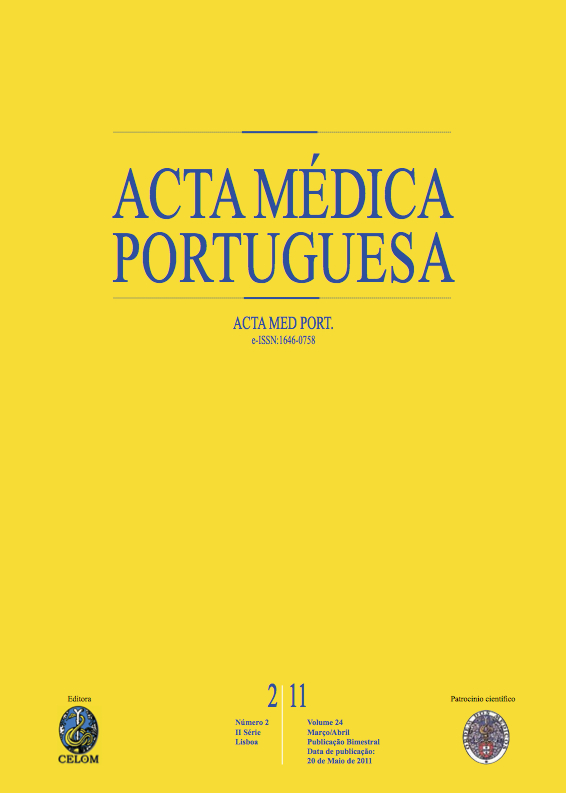Alopecia areata: a retrospective study of the paediatric dermatology department (2000-2008).
DOI:
https://doi.org/10.20344/amp.1630Abstract
Alopecia areata usually presents as patchy, nonscarring hair loss. It seems to be an immune mediated disease, whereas genetic predisposition, environmental and psychological triggers may be involved in its aetiology.To study the epidemiology, clinical aspects, associations, and treatment of alopecia areata in the paediatric population of Peadiatric Dermatology outpatients over a 9-year period. Some psychologic characteristics were also assessed.Descriptive and retrospective study of all newly diagnosed AA cases seen from January 2000 to December 2008 at the Hospital de São Marcos' Paediatric Dermatology Department. Fifteen patients with AA were interviewed for psycologic evaluation.Forty-eight cases (54% male/46% female) were identified. Mean age at presentation was 7.8 years. Family history of AA was reported in 10% of the cases, and in 25% there was a personal and/or family history of atopy. The majority of patients (82%) had mild disease and topical corticotherapy was the first-line treatment for limited AA. Fifty-four percent of these patients had a complete resolution of the lesions with treatment. Systemic treatment (corticosteroids and/or ciclosporin) was used in 71% of patients with extensive disease (more than 50% hair loss). Only one of these patients had a sustained clinical improvement after treatment. Twelve out of 15 respondents (80%) recalled stressful events preceding hair loss.Our findings are similar to those reported in other studies. Epidemiologic studies of AA are available in adulthood but there is a paucity of literature on children with AA. A holistic approach is important in the management of childhood AA as the disease can have a severe psychologic impact on an individual's well-being.Downloads
Downloads
How to Cite
Issue
Section
License
All the articles published in the AMP are open access and comply with the requirements of funding agencies or academic institutions. The AMP is governed by the terms of the Creative Commons ‘Attribution – Non-Commercial Use - (CC-BY-NC)’ license, regarding the use by third parties.
It is the author’s responsibility to obtain approval for the reproduction of figures, tables, etc. from other publications.
Upon acceptance of an article for publication, the authors will be asked to complete the ICMJE “Copyright Liability and Copyright Sharing Statement “(http://www.actamedicaportuguesa.com/info/AMP-NormasPublicacao.pdf) and the “Declaration of Potential Conflicts of Interest” (http:// www.icmje.org/conflicts-of-interest). An e-mail will be sent to the corresponding author to acknowledge receipt of the manuscript.
After publication, the authors are authorised to make their articles available in repositories of their institutions of origin, as long as they always mention where they were published and according to the Creative Commons license.









